Camera traps have been a key part of the conservation toolkit for decades. Remotely triggered video or still cameras allow researchers and managers to monitor cryptic species, survey populations, and support enforcement responses by documenting illegal activities. Increasingly, machine learning is being implemented to automate the processing of data generated by camera traps.
A recent study published showed that, despite being well-established and widely used tools in conservation, progress in the development of camera traps has plateaued since the emergence of the modern model in the mid-2000s, leaving users struggling with many of the same issues they faced a decade ago. That manufacturer ratings have not improved over time, despite technological advancements, demonstrates the need for a new generation of innovative conservation camera traps. Join this group and explore existing efforts, established needs, and what next-generation camera traps might look like - including the integration of AI for data processing through initiatives like Wildlife Insights and Wild Me.
Group Highlights:
Our past Tech Tutors seasons featured multiple episodes for experienced and new camera trappers. How Do I Repair My Camera Traps? featured WILDLABS members Laure Joanny, Alistair Stewart, and Rob Appleby and featured many troubleshooting and DIY resources for common issues.
For camera trap users looking to incorporate machine learning into the data analysis process, Sara Beery's How do I get started using machine learning for my camera traps? is an incredible resource discussing the user-friendly tool MegaDetector.
And for those who are new to camera trapping, Marcella Kelly's How do I choose the right camera trap(s) based on interests, goals, and species? will help you make important decisions based on factors like species, environment, power, durability, and more.
Finally, for an in-depth conversation on camera trap hardware and software, check out the Camera Traps Virtual Meetup featuring Sara Beery, Roland Kays, and Sam Seccombe.
And while you're here, be sure to stop by the camera trap community's collaborative troubleshooting data bank, where we're compiling common problems with the goal of creating a consistent place to exchange tips and tricks!
Header photo: Stephanie O'Donnell
No showcases have been added to this group yet.
A conservation leader, focusing mainly in primates conservation & research, Conservation education and Climate change Resilience, and adaptation
- 2 Resources
- 1 Discussions
- 7 Groups
Conservationist | Ecologist| Geospatial Scientist
- 0 Resources
- 1 Discussions
- 12 Groups
biodiversity monitoring, bioacoustics, camera trapping, and AI
- 0 Resources
- 4 Discussions
- 3 Groups
Forester/ Ecologist with a Master’s Degree in the department of Range science - Wildlife and Fresh water fisheries.
- 0 Resources
- 0 Discussions
- 11 Groups
- @Ilenia
- | She/her
I'm a PhD student focusing on communication in canids. I'm interested in animals' social behavior and cognition.
- 0 Resources
- 2 Discussions
- 5 Groups
- @Pooja_Lama
- | She/Her
I am an early career researcher who is interested in contributing to wildlife conservation.
- 0 Resources
- 0 Discussions
- 9 Groups
- 0 Resources
- 0 Discussions
- 8 Groups
- @sarthakvarora
- | he/any
Sustainability and Computer Vision
- 0 Resources
- 0 Discussions
- 7 Groups
- @MandyEyrich
- | She/Her
University of Florida (UF)
Bridging industries with 15+ years of cross-sector expertise specializing in user-centric technology and product strategy, UX research, UX/UI design, process optimization, and end-to-end agile product development moving from ideation to iteration.
- 0 Resources
- 0 Discussions
- 26 Groups
- @santhosh
- | he/him/his
Leads Technology for Conservation programme at The Habitats Trust
- 0 Resources
- 3 Discussions
- 10 Groups
- @luciegallegos
- | she/her
Natural Solutions
As an agronomist engineer, I specialized in environmental management and resource conservation. 🌍 Interested in developing solutions for biodiversity conservation #indicators #monitoring
- 0 Resources
- 6 Discussions
- 10 Groups
- @SimonsVictor
- | Marsha
I'm passionate about wildlife and animal management on development of conservation strategies for a long time monitoring
- 0 Resources
- 0 Discussions
- 8 Groups
Are you stuck on an AI or ML challenge in your conservation work? Apply now for the chance to receive tailored expert advice from data scientists! Applications due 27th January 2023
18 January 2023
The British Ecological Society's journals always have topics that will interest our conservation tech community - in this particular issue, you'll find research on a large-scale camera trapping effort to monitor mammals...
13 January 2023
Link
We review key characteristics of four AI platforms—Conservation AI, MegaDetector, MLWIC2: Machine Learning for Wildlife Image Classification and Wildlife Insights—and two auxiliary platforms—Camelot and Timelapse—that...
13 January 2023
Sending real-time alerts from ecological sensors such as camera traps in areas with poor data connectivity is complex and involves integrating a large number of potentially complex hardware and software components. Our...
13 January 2023
WILDLABS and Fauna & Flora International are seeking an early career Vietnamese conservationist for 12-month paid internship position to grow and support the Southeast Asia regional community in our global...
11 January 2023
This position focuses on the ecology aspect of the project, while a second PhD in Ilmenau will be dealing with programming/AI development. Because of the high temporal resolution of our data, we can investigate how land...
9 January 2023
To assist with creative research project in the DC/VA/MD region
6 January 2023
The University of Alaska Fairbanks is seeking a research Post Doctoral Fellow to work in collaboration with the Arctic National Wildlife Refuge, U.S. Fish and Wildlife Service. The position will focus on using Machine...
7 December 2022
Arboreal camera trapping confirms occurrence of the thin-spined porcupine and several critically endangered species in Caparaó National Park, Brazil.
28 November 2022
First known baited underwater video match of an individual white shark, based on facial scars and other unique features White shark undertakes 1,100-mile (1800-km) transboundary swim from South Africa to Mozambique
25 October 2022
Five articles that include conservation tech published at Mongabay
20 October 2022
*New closing date!* WILDLABS and Fauna & Flora International are seeking an early career conservationist for 12-month paid internship position to grow and support the Southeast Asia regional community in our global...
19 October 2022
August 2025
event
event
September 2025
event
event
event
October 2024
September 2024
58 Products
Recently updated products
4 Products
Recently updated products
| Description | Activity | Replies | Groups | Updated |
|---|---|---|---|---|
| Aloha Luke,This is an amazing tool that you have created. Are your cameras availble for purchase? We use a lot of camera traps in the Hono O Na Pali Natural Area Reserve on Kauai... |
+4
|
AI for Conservation, Autonomous Camera Traps for Insects, Camera Traps | 13 hours 45 minutes ago | |
| @LydiaKatsis Trapper was designed to process large-scale camera trap projects, and it offers two interfaces for data management: a simple citizen science interface and an expert... |
+15
|
Camera Traps | 3 days 3 hours ago | |
| Hello Eugene, I just tried your service:Was wondering how possible will it be to have the option to upload a second image and have a comparison running to let the user know if... |
|
AI for Conservation, Camera Traps, Data management and processing tools, Software Development | 5 days 22 hours ago | |
| Thank you for your reply! It surely helps, we have use exif for a while to read metadata from images, when there is information available. Could be nice to maybe see if we... |
|
AI for Conservation, Camera Traps | 1 week 2 days ago | |
| Hi everyone,I’m currently developing a multilingual, offline-friendly training program called ConTech Curriculum, designed... |
|
Autonomous Camera Traps for Insects, Camera Traps, Conservation Tech Training and Education, Protected Area Management Tools | 1 week 4 days ago | |
| Wow this is amazing! This is how we integrate Biology and Information Technology. |
|
Camera Traps, AI for Conservation, Build Your Own Data Logger Community, Data management and processing tools, Marine Conservation, Protected Area Management Tools, Geospatial | 2 weeks 3 days ago | |
| It's a wildlabs security innovations thermal camera product. We are a new company (The Netherlands), just formed last year. We just have one wildlife customer at the moment in... |
|
Camera Traps | 4 weeks ago | |
| That's great. Thanks! |
|
Camera Traps | 4 weeks 2 days ago | |
| Idles around 2W, peaks a bit more than 6W. |
|
Camera Traps, AI for Conservation | 1 month ago | |
| We have a camera that could do this over some distance away due to a thermal module being involved. It will also record very high quality audio (Nature recording audiophiles rave... |
|
Camera Traps | 1 month ago | |
| Here is a nice review on the use of camera traps in various ecological contexts:https://onlinelibrary.wiley.com/doi/toc/10.1002/(ISSN)2045-7758.ecological-insights |
+10
|
Camera Traps, Data management and processing tools | 1 month 1 week ago | |
| Super nice project! How do you imagine thermal cameras will help with vegetation? It cannot exactly look though it.Rather than placing the camera inside the metalbox have you... |
|
Camera Traps | 1 month 1 week ago |
Fully funded PhD in AI biodiversity monitoring
11 June 2024 1:07pm
€4,000 travel grants for insect monitoring an AI
6 June 2024 4:49pm
looking for help
5 June 2024 9:38am
5 June 2024 8:32pm
Hii Carolina
Thank you so much for the usefull information.
5 June 2024 8:34pm
Hi Alex
Thank you so much for the imput 🙏
New WILDLABS Funding & Finance group
5 June 2024 3:24pm
5 June 2024 4:14pm
6 June 2024 1:38am
6 June 2024 4:16am
Time drift in old Bushnell
24 May 2024 7:41am
31 May 2024 12:21pm
Depending on how much drift there is it may be a fixed offset caused by the timer not restarting until you have finished puttin gin al the settings. You set the time, then do all the the other settings for a couple of minutes, then exit settings and the timer starts from the time you set, in other words wto minute slow. The apparent drift will be short and fairly consistent, and will not increase with time (it is a bias). The solution is to leave the time setting to last and exit set p immediately after you enter the time.
If it is genuine drift then you can correct for it to an extent by noting the time on the camera and on an accurate timepiece when you retrieve the images. If you want to get fancy you can take an image of a GPS screen with the time on it, and compare it to the time stamp on the image.
Share Your Work in a Conservation Technology Video
17 May 2024 9:06pm
4th International Workshop onCamera Traps, AI, and Ecology
9 May 2024 1:00pm
Using drones and camtraps to find sloths in the canopy
18 July 2023 7:39pm
3 May 2024 6:48pm
Thank you for the tip, Eve! In fact, in the area where the foundation works, there clearly are dry seasons, the past few years much drier than normal, where trees loose their leaves a lot.
6 May 2024 4:29pm
Yes, if the canopy is sparse enough, you can see through the canopy with TIR what you cannot see in the RGB. We had tested with large mammals like rhinos and elephants that we could not see at all with the RGB under a semi-sparse canopy but were very clearly visible in TIR. It was actually quite surprising how easily we could detect the mammals under the canopy. It's likely similar for mid-sized mammals that live in the canopy that those drier seasons will be much easier to detect, although we did not test small mammals for visibility through the seasons. Other research has and there are a number of studies on primates now.
I did quite a bit of flying above the canopy, and did not have many problems. It's just a matter of always flying bit higher than the canopy. There are built in crash avoidance mechanisms in the drones themselves for safety so they do not crash, although they do get confused with a very brancy understory. They often miss smaller branches.If you look in the specifications of the particular UAV you will see they do not perform well with certain understories, so there is a chance of crashing. The same with telephone wires or other infrastructure that you have to be careful about.
Also, it's good practice to always be able to see the drone, line-of-sight, which is actually a requirement for flight operations in many countries. Although you may be able to get around it by being in a tower or being in an open area.
Some studies have used AI classifiers and interesting frameworks to discuss full or partial detections, sometimes it is unknown if it is the animal of interest. I would carefully plan any fieldwork around the seasons and make sure to get any of your paperwork approved well before the months of the dry season. It's going to be your best chance to detect them.
7 May 2024 1:49am
Thank you for elaborating, @evebohnett ! And for the heads ups!
Travel grants for insect monitoring an AI
3 May 2024 5:20pm
The Inventory User Guide
1 May 2024 12:46pm
Introducing The Inventory!
1 May 2024 12:46pm
22 July 2024 10:55am
23 July 2024 2:05pm
23 July 2024 2:53pm
Hiring Chief Engineer at Conservation X Labs
1 May 2024 12:19pm
MegaDetector v5 release
20 June 2022 9:06pm
23 April 2024 9:43pm
Hi @dmorris,
might you have encountered this issue while working with Mega detector v5?
The conflict is caused by:pytorchwildlife 1.0.2.13 depends on torch==1.10.1pytorchwildlife 1.0.2.12 depends on torch==1.10.1pytorchwildlife 1.0.2.11 depends on torch==1.10.1
if yes what solution helped?
23 April 2024 10:38pm
I'm sorry, I don't use PyTorch-Wildlife; I recommend filing an issue on their repo. Good luck!
23 April 2024 10:38pm
[oops, the same reply got submitted twice and there doesn't seem to be a "delete" button]
Pytorch-Wildlife: A Collaborative Deep Learning Framework for Conservation (v1.0)
21 February 2024 10:30pm
26 February 2024 11:58pm
This is great, thank you so much @zhongqimiao ! I will check it out and looking forward for the upcoming tutorial!
17 April 2024 11:07am
Hi everyone! @zhongqimiao was kind enough to join Variety Hour last month to talk more about Pytorch-Wildlife, so the recording might be of interest to folks in this thread. Catch up here:
23 April 2024 9:48pm
Hi @zhongqimiao ,
Might you have faced such an issue while using mega detector
The conflict is caused by:pytorchwildlife 1.0.2.13 depends on torch==1.10.1pytorchwildlife 1.0.2.12 depends on torch==1.10.1pytorchwildlife 1.0.2.11 depends on torch==1.10.1
if yes how did you solve it, or might you have any ideas?
torch 1.10.1 doesn't seem to exist
Ecologist Postdoctoral Research Fellow
23 April 2024 4:32pm
Program Manager: Integrating movement and camera trap data with international conservation policy
22 April 2024 10:16pm
Postdoc: Biologging & Camera Trap Data Integration
22 April 2024 10:10pm
Newt belly pattern for picture-matching
18 April 2024 3:57pm
19 April 2024 10:31am
19 April 2024 4:14pm
Hi Robin this is a great idea! Have been thinking about approaching the community for quiz questions. Will reach out to Xavier to ask if we can use it or if he wishes to run it on next Wednesdays VH
22 April 2024 11:27am
Thanks, and that's a match!
All these pictures are from a lab experiment and formated with AmphIdent. We took weekly belly pictures of several larvae. The aim of this google form is to validate (by comparing answers with the lab reference image base) picture-matching by human is reliable although the change of pattern can be verry quick at this life stage.
If validated there will be the need to improve existing pattern-matching solutions for in situ observations of larvae, for instance with ML and/or Human Learning (thanks Zooniverse)...
WILDLABS AWARDS 2024 - No-code custom AI for camera trap species classification
5 April 2024 7:00pm
10 April 2024 3:55am
Happy to explain for sure. By Timelapse I mean images taken every 15 minutes, and sometimes the same seals (anywhere from 1 to 70 individuals) were in the image for many consecutive images.
17 April 2024 5:53pm
Got it. We should definitely be able to handle those images. That said, if you're just looking for counts, then I'd recommend running Megadetector which is an object detection model and outputs a bounding box around each animal.
21 April 2024 5:19pm
Hi, this is pretty interesting to me. I plan to fly a drone over wild areas and look for invasive species incursions. So feral hogs are especially bad, but in the Everglades there is a big invasion of huge snakes. In various areas there are big herds of wild horses that will eat themselves out of habitat also, just to name a few examples. Actually the data would probably be useful in looking for invasive weeds, that is not my focus but the government of Canada is thinking about it.
Does your research focus on photos, or can you analyze LIDAR? I don't really know what emitters are available to fly over an area, or which beam type would be best for each animal type. I know that some drones carry a LIDAR besides a camera for example. Maybe a thermal camera would be best to fly at night.
Faces, Flukes, Fins and Flanks: How multispecies re-ID models are transforming Wild Me's work
17 April 2024 11:10am
Camera Trap storage and analyzing tools
16 April 2024 5:15pm
16 April 2024 7:17pm
I don't have an easy solution or a specific recommendation, but I try to track all the systems that do at least one of those things here:
https://agentmorris.github.io/camera-trap-ml-survey/#camera-trap-systems-using-ml
That's a list of camera trap analysis / data management systems that use AI in some way, but in practice, just about every system available now uses AI in some way, so it's a de facto list of tools you might want to at least browse.
AFAIK there are very few tools that are all of (1) a data management system, (2) an image review platform, and (3) an offline tool. If "no Internet access" still allows for access to a local network (e.g. WiFi within the ranger station), Camelot is a good starting point; it's designed to have an image database running on a local network. TRAPPER has a lot of the same properties, and @ptynecki (who works on TRAPPER) is active here on WILDLABS.
Ease of use is in the eye of the beholder, but I think what you'll find is that any system that has to actually deal with shared storage will require IT expertise to configure, but systems like Camelot and TRAPPER should be very easy to use from the perspective of the typical users who are storing and reviewing images every day.
Let us know what you decide!
17 April 2024 1:55am
Can't beat Dan's list!
I would just add that if you're interested in broader protected area management, platforms like EarthRanger and SMART are amazing, and can integrate with camera-trapping (amongst other) platforms.
Starting a Conservation Technology Career with Vainess Laizer
16 April 2024 1:34pm
Using the multivariate Hawkes process to study interactions between multiple species from camera trap data
15 April 2024 3:00pm
Research Assistant, Lion Landscapes in Nanyuki
11 April 2024 9:49am
Comparing local ecological knowledge with camera trap data to study mammal occurrence in anthropogenic landscapes of the Garden Route Biosphere Reserve
9 April 2024 7:09pm
Online training workshop: camera trap distance sampling, 27-31 May 2024.
6 April 2024 4:00am
Mammal responses to global changes in human activity vary by trophic group and landscape
3 April 2024 4:52pm
Blind Spots in Conservation Tech Management in Remote Landscapes: Seeking Your Input
20 March 2024 10:51am
22 March 2024 9:48am
Hi @lucianofoglia
Thanks for sharing your thoughts with the community. What you've touched on resonates with a number of users and developers (looking at you @Rob_Appleby) who share similar concerns and are keen to address these issues.
As a beliver in open sourcing conservation technologies, to mitigate issues you've noted (maintenance of technologies / solutions, repairability, technical assistance to name but a few), really the only way to achieve this in my eyes is through the promotion of openness to enable a wide range of both technical and non-technical users to form the pool of skills needed to react to what you have stated. If they can repair a device, or modify it easily, we can solve the waste issue and promote reusability, but first they need access to achieve this and commerical companies typically shy away from releasing designs to protect against their IP that they keep in house to sell devices / solutions.
I would think for an organisation to achieve the same the community would need to help manufacturers and developers open and share hardware designs, software, repairability guides etc, but the reality today is as you have described.
One interesting conversation is around a kitemark, i.e a stamp of approval similar to the Open Source Hardware Association's OSHWA Certification), but as it's not always hardware related, the kitemark could cover repairability (making enclosure designs open access, or levels of openness to start to address the issue). Have a look at https://certification.oshwa.org/ for more info. I spent some time discussing an Open IoT Kitemark with http://www.designswarm.com/ back in 2020 with similar values as you have described - https://iot.london/openiot/
You may want to talk more about this at the upcoming Conservation Optimism Summit too.
Happy to join you on your journey :)
Alasdair (Arribada)
30 March 2024 3:57pm
Hi @Alasdair
Great to hear from you! Thanks for the comment and for those very useful links (very interesting). And for letting @Rob_Appleby know. I can't wait to hear from her.
Open source is my preference as well. And it's a good idea. But, already developing the tech in house is a step ahead from what would be the basic functional application of an organization that could manage the tech for a whole country/region.
I have witnessed sometime how tech have not added much to the efficiency of local teams but instead being an tool to promote the work of NGOs. And because of that then innovative technologies are not developed much further that a mere donation (from the local team's perspective). But for that tech to prove efficient, a lot more work on the field have to be done after. The help of people with expertise in the front line with lots of time to dedicate to the cause is essential (this proves too expensive for local NGOs and rarely this aspect is consider).
I imagine this is something that needs to come from the side closer to the donors and International NGOs. Ideally only equipment can be lend within a subscription model and not just donated without accountability on how that tech is use. Effectively the resources can be distributed strategically over many projects. Allowing to tech to be repurposed.
Sorry that I step down the technical talk, the thing is that sometimes the simplest things can make the most impact.
It would be good to know if any in the community that have spent considerable time working in conservation in remote regions, and have observed similar trends.
Thanks! Luciano
Applying Open-Source AI to Camera Trap Imagery
27 March 2024 4:34pm
How does behavior influence the use of technology for animal detection ?
22 March 2024 7:49pm

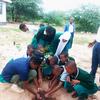




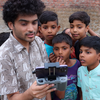






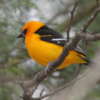











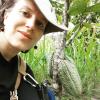




































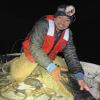











5 June 2024 4:19pm
Hi Agripina!
I have always used Browning, and I have found the basic models to be perfectly adequate, using only 6 AA batteries (not 8 like the majority of camera traps). Now I am using the model BTC-8E, which has been a great success due to its excellent definition.
I am from Chile, and I know of a company that imports them. Perhaps you should look for someone in your country that does the same, because importation and customs duties are often a headache.
I recommend you to visit trailcampro.com to read reviews from customers on different brands and models of camera traps.
I hope this information is helpful